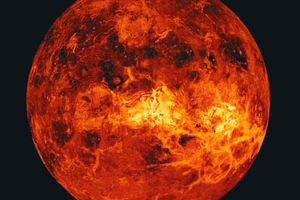Venus: Mysteries Solved

Venus is a hot, hellish and volcanic planet in the solar system
European Space Agency’s Venus Express Mission has solved many of the mysteries surrounding the planet. Venus is the planet closest to earth not just in distance, but also in size.
Earth’s evil twin
Venus, the second planet from the Sun, and Earth, the third, started out as virtual twins. But at some point in their 4.5 billion year histories, something horribly went wrong on Venus. The greenhouse effect wrecked havoc, making Venus a hellish kiln with hot and dry surface and crushing atmosphere made up of carbon dioxide and sulphuric acid. The two planets were, in fact, very similar in the earlier days of the solar system. And then they evolved in different directions, but according to the same rules and explanations.
A wet history
Long, long ago, Venus was a much wetter place, probably with liquid water oceans like those on earth and like those that scientists think once existed on Mars. Eventually the oceans boiled off and all the water ended up as water vapour in the atmosphere. The dominant escaping ions included hydrogen and oxygen in the ratio that corresponds to water. Scientists have now discovered how particles escape from the atmosphere of Venus.
Venus, unlike earth, lacks a magnetic field to protect its atmosphere from the solar wind. Thus the solar wind interacts directly with the upper atmosphere of Venus, causing Venus’s atmosphere to lose its gases in the form of ionised particles. Scientists now believe that liquid water oceans may have been present on Venus as recently as 1 billion to 3 billion years ago.